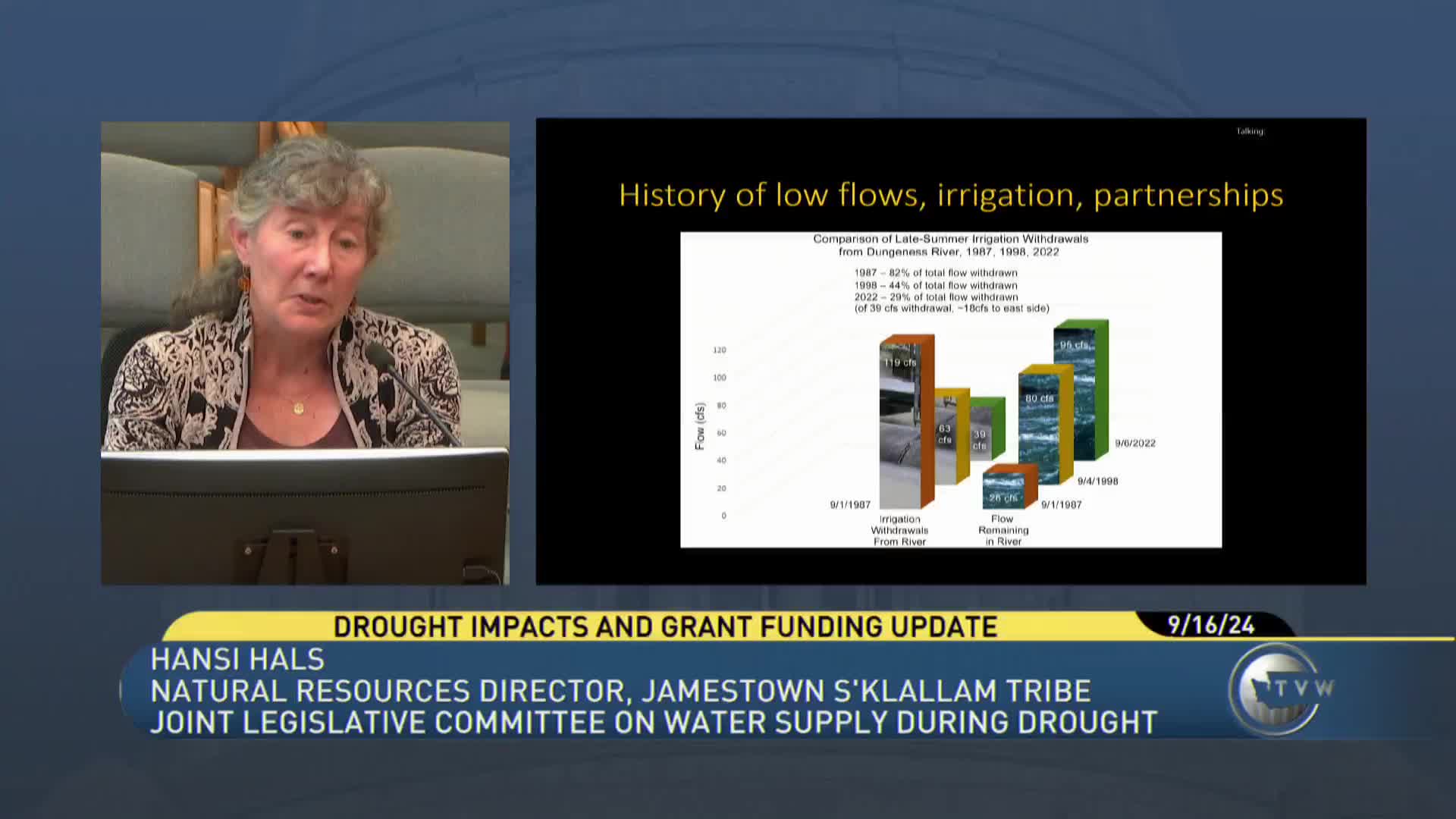Drought Response Strategies Boost Salmon Survival in Dungeness River
September 16, 2024 | Joint Legislative Committee on Water Supply During Drought, Joint, Work Groups & Task Forces, Legislative Sessions, Washington
This article was created by AI summarizing key points discussed. AI makes mistakes, so for full details and context, please refer to the video of the full meeting. Please report any errors so we can fix them. Report an error »

In a recent government meeting, officials discussed the ongoing efforts to manage water resources in the Dungeness River, particularly in light of low flow conditions and drought impacts. The meeting highlighted collaborative initiatives involving the Department of Ecology, local partners, and the Washington Water Trust aimed at ensuring both agricultural needs and fish habitat are preserved.
Key strategies include early monitoring of river conditions by biologists and the implementation of programmatic responses to address challenges faced by irrigators and aquatic life. Notably, the use of drought response funding has facilitated improvements in fish passage through the construction of barrier riffles, which are designed to enhance water flow while allowing fish to navigate around them.
The meeting also detailed the success of a dry year leasing program, where farmers voluntarily forbear irrigation rights on certain acres in exchange for compensation. This year, over 1,300 acres were enrolled, with farmers receiving $191 per acre for the month of August. Additionally, the concept of pulse flows was introduced, allowing for temporary increases in river flow to support fish migration during critical periods.
Biologists reported positive outcomes from these initiatives, noting improved Chinook salmon spawning distribution in the upper Dungeness River. Acoustic tracking technology has been deployed to monitor fish movements, providing valuable data on their behavior in response to the pulse flows.
Overall, the collaborative efforts have shown promise in balancing the needs of agriculture with the ecological health of the Dungeness River, with officials expressing optimism about reaching escapement goals for Chinook salmon in the coming years. The meeting concluded with a commitment to continue these efforts and explore further enhancements to water management strategies.
Key strategies include early monitoring of river conditions by biologists and the implementation of programmatic responses to address challenges faced by irrigators and aquatic life. Notably, the use of drought response funding has facilitated improvements in fish passage through the construction of barrier riffles, which are designed to enhance water flow while allowing fish to navigate around them.
The meeting also detailed the success of a dry year leasing program, where farmers voluntarily forbear irrigation rights on certain acres in exchange for compensation. This year, over 1,300 acres were enrolled, with farmers receiving $191 per acre for the month of August. Additionally, the concept of pulse flows was introduced, allowing for temporary increases in river flow to support fish migration during critical periods.
Biologists reported positive outcomes from these initiatives, noting improved Chinook salmon spawning distribution in the upper Dungeness River. Acoustic tracking technology has been deployed to monitor fish movements, providing valuable data on their behavior in response to the pulse flows.
Overall, the collaborative efforts have shown promise in balancing the needs of agriculture with the ecological health of the Dungeness River, with officials expressing optimism about reaching escapement goals for Chinook salmon in the coming years. The meeting concluded with a commitment to continue these efforts and explore further enhancements to water management strategies.
View full meeting
This article is based on a recent meeting—watch the full video and explore the complete transcript for deeper insights into the discussion.
View full meeting
